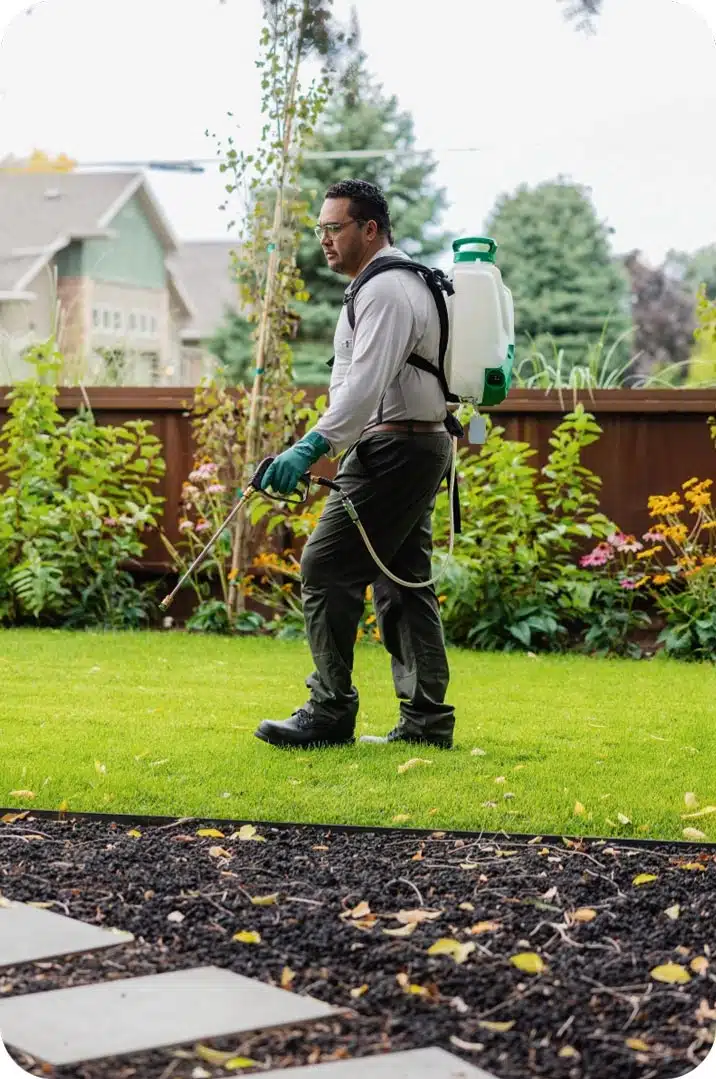Trusted A1 Exterminator Charlotte NC - Comprehensive Pest Solutions
Wiki Article
Bed Bug Therapy Break Down: Contrasting Chemical Vs. Non-Chemical Solutions
In the world of pest control, specifically when taking care of the persistent concern of bed insects, the option in between chemical and non-chemical treatment options can be a crucial one. Both approaches use distinctive advantages and downsides, influencing factors such as effectiveness, safety considerations, and general expense. By analyzing the nuanced details of each method, a more clear understanding of which path to seek in dealing with a bed insect invasion can be acquired.Efficiency of Chemical Treatments
Chemical treatments for bed pest invasions have actually been commonly identified for their powerful and fast effectiveness in removing these insects. When considering the effectiveness of chemical therapies, it is critical to recognize that they can supply a quick and complete solution to a bed insect problem.Furthermore, chemical therapies have the benefit of using residual results, indicating that they can remain to get rid of bed insects even after the preliminary application. This recurring action is particularly advantageous in combating any kind of potential re-infestations. In addition, the fast activity of chemical treatments can bring relief to people dealing with extreme bed insect problems, allowing them to restore control of their space rapidly.
Security Problems With Chemical Solutions
When utilizing chemical remedies for bed bug therapy is making certain the safety and security of residents and the environment,One crucial element that needs cautious factor to consider. While chemical treatments can be effective in eliminating bed insects, they may present threats otherwise taken care of properly. Among the key safety interest in chemical services is the possible injury they can cause to human health. Direct exposure to certain chemicals used in bed pest therapies can bring about breathing concerns, skin inflammation, or other unfavorable responses, particularly in people with pre-existing problems or level of sensitivities. Furthermore, inappropriate application or dose of chemical pesticides can lead to harmful residues sticking around in the cured location, presenting long-lasting health and wellness dangers to occupants.Moreover, the environmental impact of chemical remedies is one more substantial consideration. Some pesticides used in bed pest treatments might be unsafe to helpful pests, wildlife, and environments if they leach right into the soil or water systems. It is important to use chemical therapies sensibly, adhering to safety guidelines, and thinking about much less toxic alternatives to alleviate these risks and guarantee the efficient and secure administration of bed insect infestations.
Advantages of Non-Chemical Techniques
Thinking about the potential safety problems and ecological effect associated with chemical options for bed insect treatment, discovering non-chemical strategies offers an appealing alternative with numerous unique benefits. Non-chemical treatments are eco pleasant, as they do not add to air or water air pollution, making them a sustainable selection for insect control.Additionally, non-chemical options can be effective in targeting bed insects, consisting of hard-to-reach areas where chemical therapies may not penetrate - A1 exterminator charlotte nc. Techniques such as warmth therapy, vacuuming, vapor cleaning, and mattress coverings offer thorough eradication without the usage of damaging chemicals.
Limitations of Non-Chemical Treatments

Furthermore, non-chemical treatments frequently call for multiple applications to achieve effective elimination. This can be time-consuming and may not constantly ensure total removal of all bed pests and their eggs, especially in hidden or hard-to-reach places.
Furthermore, the success of non-chemical treatments greatly depends on proper application and thoroughness, which can be testing for people without specialist expertise. Insufficient application of non-chemical techniques might lead to insufficient removal, causing relentless infestations and the requirement for extra therapies.
For that reason, while non-chemical treatments have their benefits, it is vital to recognize these restrictions and consider them when identifying one of the most reliable strategy for taking care of bed bug invasions.
Price Contrast: Chemical Vs. Non-Chemical Options
Offered the restrictions related to non-chemical treatments, an important aspect to examine in the context of bed pest monitoring is the price contrast in between chemical and non-chemical options. Chemical therapies usually include the application of insecticides by professionals, which can range from $250 to $900 per area, depending on the severity of the infestation and the dimension of the location to be dealt with. On the other hand, non-chemical therapies like warm treatment or steam can be a lot more pricey, with prices ranging from $1,000 to $6,000 for an entire home. While the first expense of chemical therapies might appear lower, several therapies may be called for to totally get rid of the problem, potentially boosting the overall cost. On the various other hand, non-chemical options may give a more lasting and green remedy, although they can be cost-prohibitive for some individuals. Inevitably, when taking into consideration the cost of bed pest treatment options, it is necessary to evaluate the ahead of time expenses against the effectiveness and long-lasting sustainability of the picked approach.Conclusion

Considering the prospective safety and security issues and ecological effect connected with chemical remedies for bed pest therapy, discovering non-chemical strategies presents an appealing option with numerous distinctive advantages.Offered the limitations connected with non-chemical treatments, a vital facet to evaluate in the context of bed pest monitoring is the expense comparison between chemical and non-chemical choices. In contrast, non-chemical therapies like warm therapy or heavy steam can be extra expensive, with costs ranging from $1,000 to $6,000 for a whole home. While the first expense of chemical treatments may appear lower, numerous therapies may be needed to completely get rid of the invasion, potentially boosting the general price.In conclusion, when comparing chemical and non-chemical bed insect therapy choices, it is important to consider efficiency, safety, benefits, limitations, and cost.
Report this wiki page